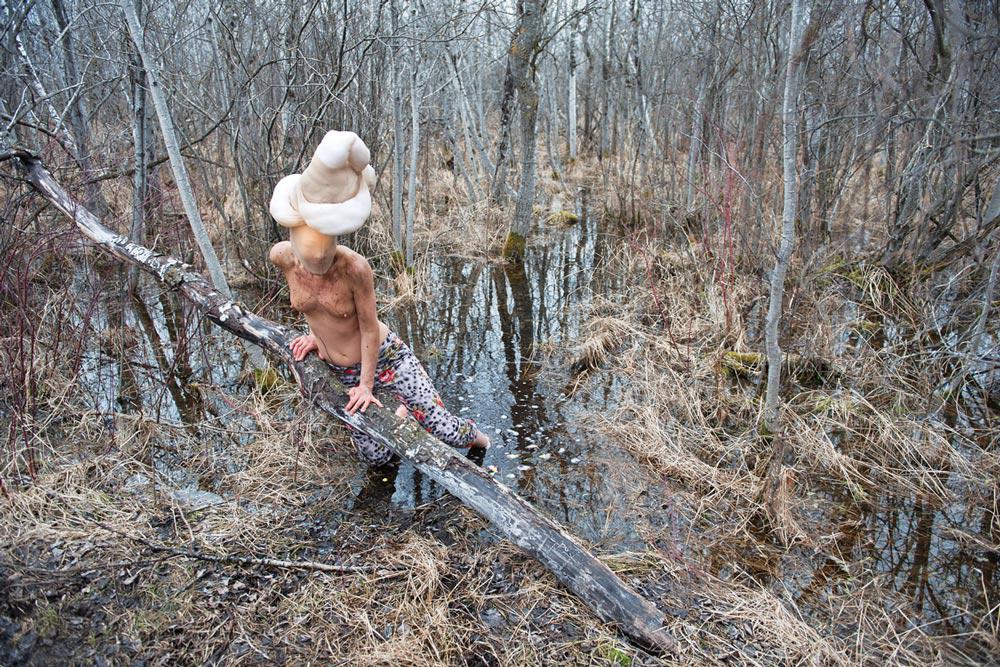I like to think there is a difference between repeating yourself and finding new ways of saying the same thing. Repetition can be exhausting, while clarity galvanizes. My favourite artists are those whose work exemplifies this difference. To date, Dominique Rey has completed eight bodies of work. Using mostly photography but also drawing, painting and performance, Rey has presented a clear concern through almost everything she has produced. In the artist’s statement for her winter solo show, “Erlking,” at Southern Alberta Art Gallery, Rey characterized this concern as “an investigation into alterity.” She considers alterity in terms of those occupying marginalized existences, with series considering exotic dancers, nuns, freak-show performers, missing women and, most recently, the embodiment of the unconscious as the fictional figure Erlking.
The series, which comprises a suite of 17 chromogenic colour prints and one video, depicts Rey in various performances dressed in absurd amalgamations of stuffed hosieries, plastic masks, fishnet stockings and bright wigs; several personae approach a vagabond mutation of burlesque-meets-futuristic-alien snow queens. Exploring the history of the Erlking—a type of siren residing in the woods who lures travellers to their fates—Rey embodies this character in many guises, and in several settings in Manitoba and Alberta. In the wilderness, the artist attempts to access her unconscious through the various characters. The mix of muted backdrops, stark barren landscapes and fluorescent costumes is jarring. In these images, Rey positions her character somewhere between hunted and hunter. Nowhere is this clearer than in the single video, Tundrunning (2011), where an exhausted yet unbreakable Rey runs in circles on a frozen lake in rural Manitoba to a dizzying soundtrack of Eastern European psycho-Klezmer–polka-punk.
Mound (2011), perhaps the most compelling image in the series, shows Rey positioned diagonally on a stony hillside next to a condemned mine. The crisp, overcast and ominous greys of the forested environment in late fall (slate, bark, dusk) all contribute to the ongoing otherness of the series. A lollipop-pink wig obscures Rey’s face and she wears a mess of cotton ball–stuffed hosiery, evoking many scenes of violence from prime-time cop shows. Is she reeling from an assault or readying herself to strike? If she were any more horizontal (or vertical), the image would read completely different. Rey is an artist who understands the potential in minute gestures, and it pays off.









